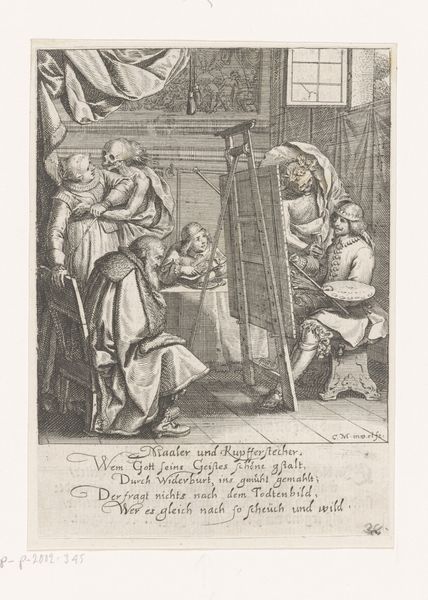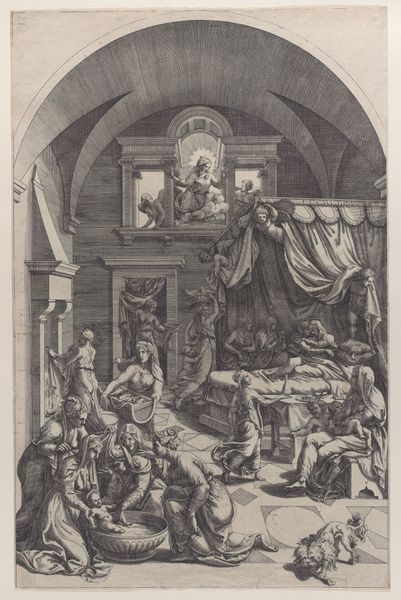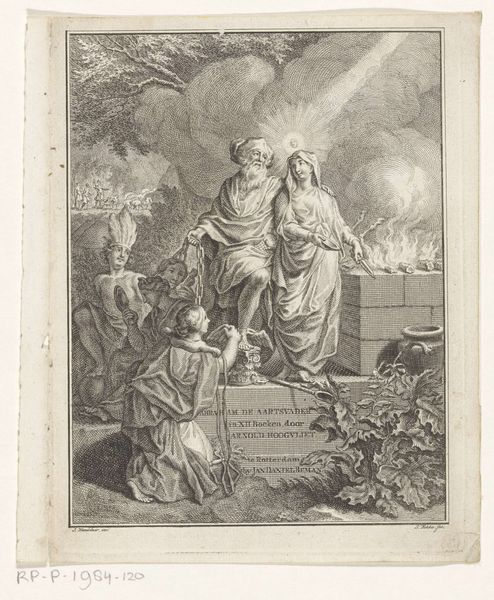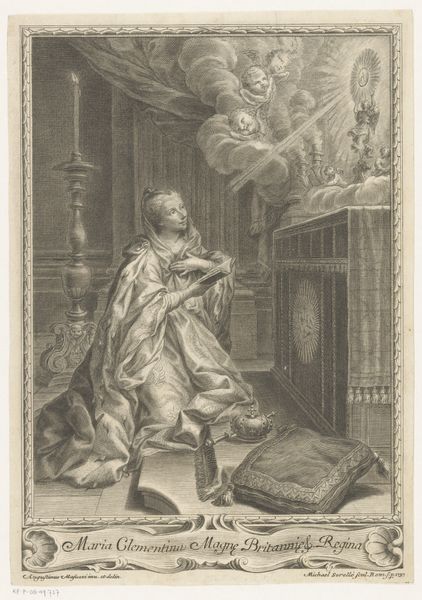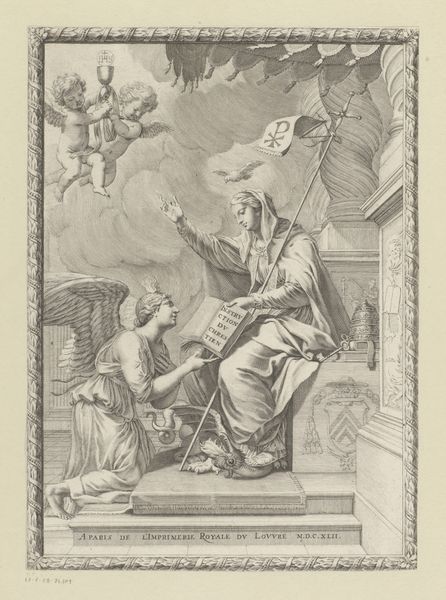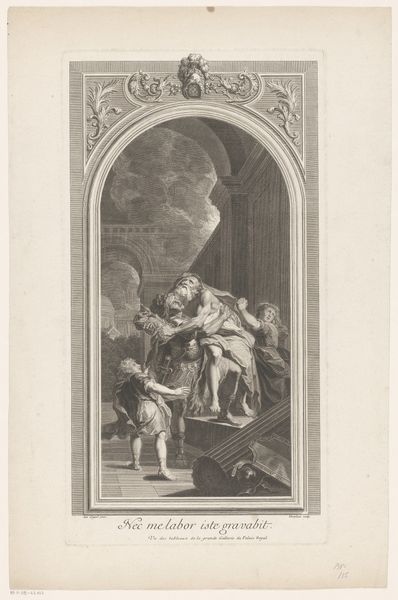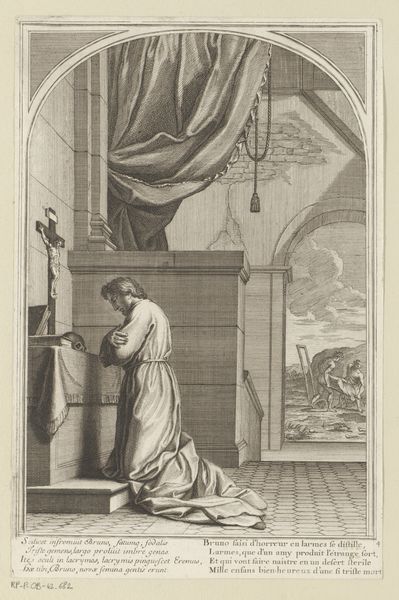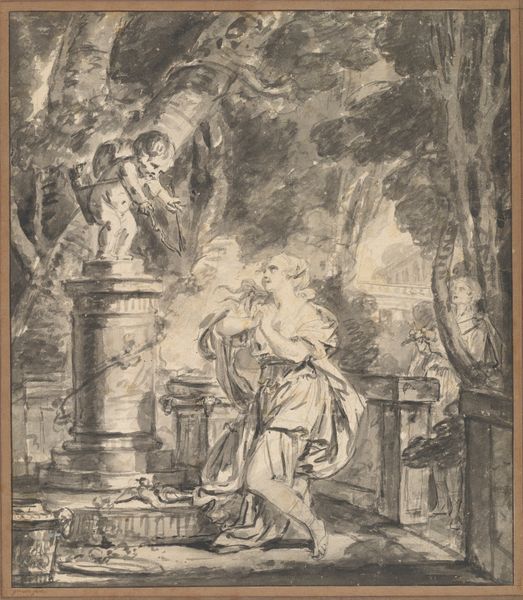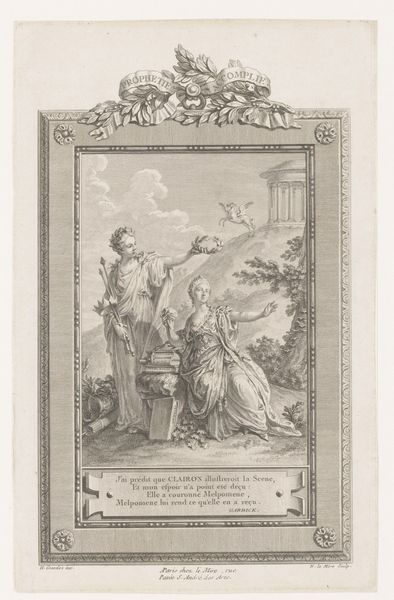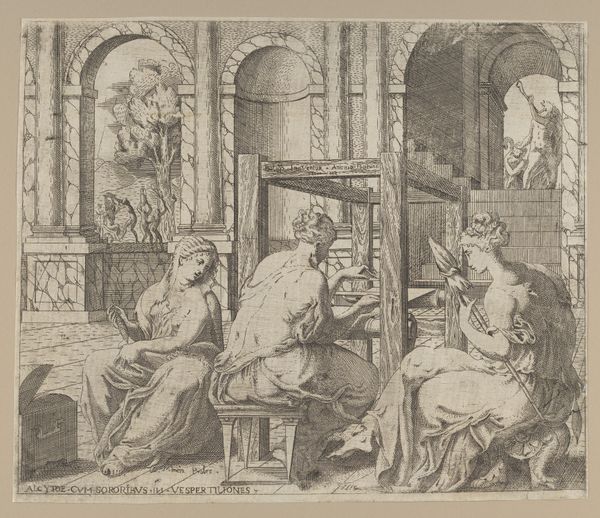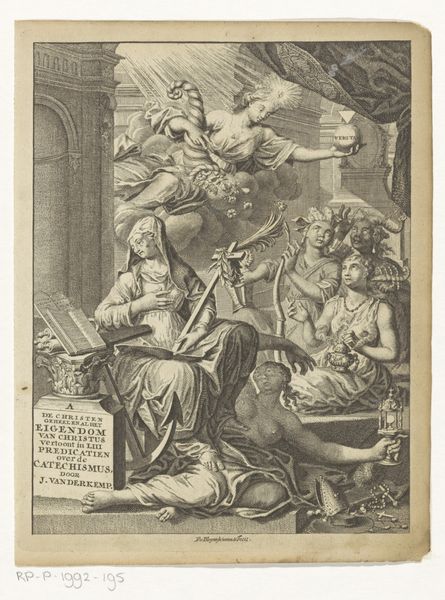
God Sending the Archangel Gabriel to the Virgin 1595 - 1600
0:00
0:00
drawing, print, engraving
#
drawing
#
medieval
# print
#
landscape
#
figuration
#
history-painting
#
engraving
#
virgin-mary
#
angel
Dimensions: Sheet (cut roughly to platemark): 10 3/16 × 8 7/16 in. (25.9 × 21.4 cm) Image: 9 3/8 × 8 1/4 in. (23.8 × 20.9 cm)
Copyright: Public Domain
Curator: Here we have Johann Sadeler’s “God Sending the Archangel Gabriel to the Virgin,” an engraving from around 1595-1600. The landscape style immediately sets it apart from typical depictions of this scene. Editor: It’s fascinating to see such a common theme treated in printmaking, and on such a large scale, really. What can you tell me about this piece? Curator: Notice how the lines aren't just illustrative; they define textures and surfaces. This print speaks volumes about the production and distribution of images at the time. Engravings like this facilitated the spread of religious iconography, almost a mass-produced devotion. Look at how the depiction of God and the angels is rendered with the same care as Mary's garments or the architecture. Editor: That’s interesting. I didn't immediately connect the materiality with its religious context, but it makes sense that an engraving allowed the proliferation of such images. Do you think that makes it more democratic or more of a commercialization of religion? Curator: Both, really! The material allows us to view the socio-economic context: The access to and consumption of religious imagery broadened, yet it was undeniably tied to economic means, commissioning engravers like Sadeler wasn’t cheap. But it is in the way it uses its material, printmaking, to flatten hierarchies—depicting both God and everyday scenes with same intensity—which opens avenues for thinking of an artistic and spiritual leveling. Editor: So, looking at this work from a materialist perspective gives us a better understanding of production methods, consumerism, and potential shifts in the spiritual life of that era. Thank you for that fresh perspective. Curator: Indeed! By investigating materials and labor, we unearth compelling stories behind even the most familiar scenes. It certainly reframes our understanding of religious art.
Comments
No comments
Be the first to comment and join the conversation on the ultimate creative platform.

